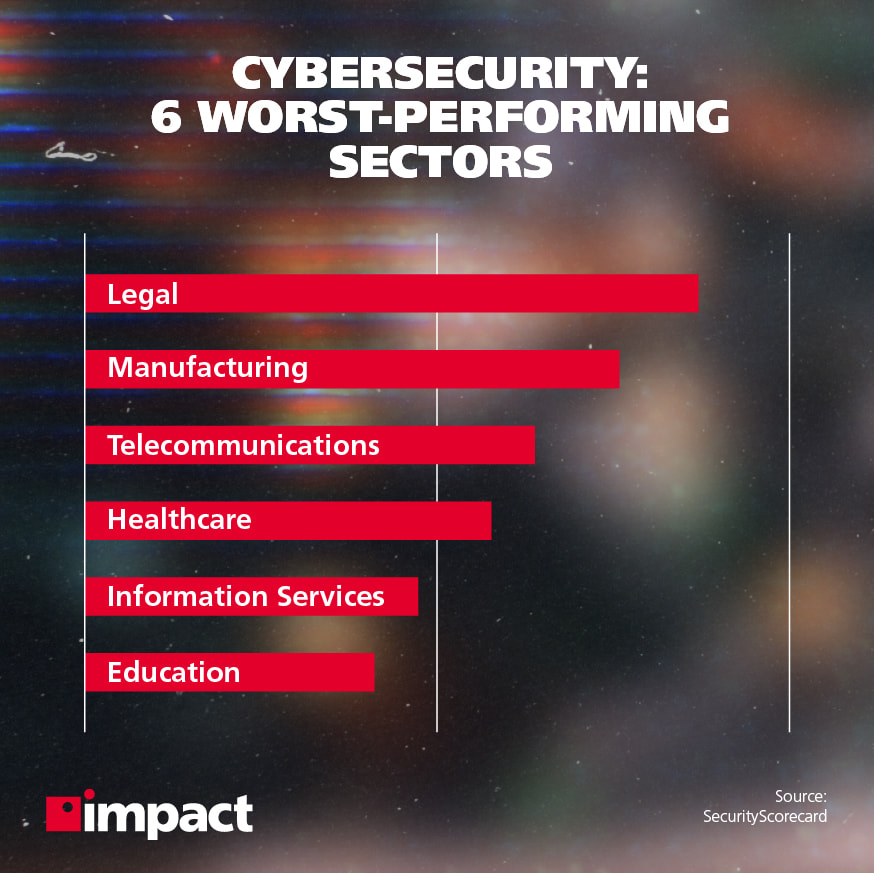Cybersecurity in education is a topic that has been raised in profile over the last few years.
This is partly because of the increasing number of attacks that are targeting organizations in general, particularly during the onset of the coronavirus pandemic.
It’s also because education organizations and institutions have often been slow to react to an increasingly dangerous security landscape, leading many to become prime targets and victims of cyberattacks.
To combat this, organizations should start taking cybersecurity in education more seriously and assess whether their current strategy is enough to defend themselves against modern threats.
Take a look at these stats for an indication of where the sector is and the necessity for institutions to take more effective action.
1. 1000+ cybersecurity incidents since 2016
The K-12 Cyber Incident Map, which has been tracking publicly-disclosed cybersecurity incidents in US K-12 public schools since 2016, reports that there have been over one thousand incidents in the last four years alone.
These incidents include:
- Unauthorized disclosures, breaches, or hacks resulting in the disclosure of personal data
- Ransomware attacks
- Phishing attacks resulting in the disclosure of personal data
- Denial-of-service attacks
- Other cyber incidents resulting in school disruptions and unauthorized disclosures
In 2019, there were a reported 348 incidents, nearly three times as many as in 2018 and equating to a rate of about two incidents per school day over the course of the year. In 2020, this figure rose further to 377 and will continue to climb as establishments look to get cybersecurity under control.
2. 27% see the Current Security of their Data Center as ‘Inadequate’ and in Urgent Need of Updating
It’s not uncommon for IT departments to lack confidence in the security of their information and the data centers where its housed.
In fact, 96% of IT decision-makers believe their organizations are susceptible to external cyberattacks and 71% say they are not prepared to cope with them.
When it comes to education organizations, the information they possess—which grows every year as a result of increased implementation of technology in schools—is extremely sensitive, and it’s simply not viable to safeguard it in a server that doesn’t have the protections afforded to the highly-rated data centers which are commonplace in 2020.
Related Post: Data Center Tiers: What Are They and Why Do They Matter?
By not having a modern, secure data center, the possibility for extended downtime and associated costs during a breach is significant.
3. Schools are the no.2 Target for Ransomware Attacks
Ransomware in 2020 has increased by a factor of seven compared to 2019.
Victims of such attacks are in a lose-lose situation: if the ransom is paid, as it is by nearly three quarters of businesses in the US, then money is lost and cybercriminals are encouraged to pursue further attacks.
If the ransom is not paid, organizations have to face the prospect of having their data leaked, which given the nature of information pertaining to children, should be avoided at all costs.
Either way, breaches must be reported by the institution or else they’ll receive steep penalties.
4. 42% of Schools Have Students or Staff that Circumvent Cybersecurity Protections
Just as it’s important to implement the correct technology for cybersecurity in education organizations, so too is it important for them to carry out policies on campus that encourage safe cybersecurity practices.
For organizations, it’s incumbent on them to make sure that not only are they adopting the right technology to protect themselves, but that they’re also providing the right resources and making the necessary restrictions to ensure that users know what is expected of them and have difficulty attempting workarounds.
5. 41% of Higher Education Cybersecurity Incidents and Breaches were Caused by Social Engineering Attacks.
Cyberattacks rely on human error in order to succeed. They work on the basis of a law of averages approach, determining that if they target a set number of victims, they will be successful in their attempts eventually.
Human error is the number one cause of data breaches from cyberattacks, with 52% of incidents directly attributable to them.
Social engineering involves manipulating victims into giving up sensitive information to a third party.
This is often achieved by impersonating a trusted friend, colleague, or organization associated with the target.
The most common method that involves social engineering is phishing, which are typically emails.
6. 30% of Users in the Education Industry have Fallen for Phishing Emails.
The proportion of users in education who have fallen for phishing attacks is roughly a third. If nothing else, the amount of people who fall for attacks is indicative of both how prevalent and how successful this type of cybercrime is.
To guard against it, organizations should strongly consider security awareness training among users, educating them on how to spot a phishing attack and how to deal with it appropriately.
Just 11% of respondents in a survey by Hiscox in their annual report said that their companies had increased spending on security awareness training after a cyberattack.
7. Educational Records can Fetch up to $265 on the Black Market.
Information like educational records and healthcare records are some of the most sought-after data for cybercriminals. These sectors in particular provide extremely high levels of financial gain for hackers.
When you consider that the going rate for a credit card is just over five dollars, it comes as little surprise that education and healthcare organizations are being targeted to the extent they currently are.
In short, cyberattacks in these industries provide good ROI for hackers, so don’t be surprised if attacks in sectors that house very sensitive information, like education, government, and healthcare, continue to increase next year.
8. 87% of Educational Establishments Have Experienced at Least One Successful Cyberattack.
The vast majority of education organizations have been the victim of a cyberattack. This mostly concurs with the rapid rise of attacks we’ve seen over the last year and should serve as a warning to administrators.
What’s important for institutions to recognize is the need for them to invest in and implement strategies for cybersecurity that are proactive.
73% of organizations are unprepared for cyberattacks today, many of them remaining unprepared even after an attack. Organizations must implement the necessary technology to avoid future attacks before a breach can occur.
9. 85% of Universities Agree that More Funding Must be Given to IT Security to Protect Critical Research IP
Research IPs are extremely valuable to higher education organizations and adopting the correct technology to protect them is essential.
Considering the number of attacks we’ve seen just this year and the disproportionate rise of cybercrime over just the last two years, institutions should take their intellectual property security as seriously as is warranted and engage with methods to protect it as best they can.
10. The Education Sector Accounted for 13% of all Data Security Breaches During the First Half of 2017, Resulting in the Compromise of Some 32 Million Personal Records
As an indication of the seriousness of cybersecurity in education, a substantial amount of total data breaches across all industries come from this one sector.
As we’ve seen above, the education sector is both lagging behind in terms of technology adoption and at the same time has a user base of people who are susceptible to attack.
This makes education organizations an easy target for cybercriminals, who continue to attack schools and colleges to gain valuable information and data to sell.
11. A 2019 attack left 1,233 individual school establishments susceptible to attack
Emsisoft reported back in 2019 that at least 966 government agencies, healthcare providers, and universities and colleges (along with their constituent schools) were compromised in a wide-scale ransomware attack that ended up costing over $7.5 billion.
It’s common for businesses to eschew cybersecurity investments because of a perception that it won’t happen to them; schools suffer from a similar culture that doesn’t emphasize cybersecurity protection, in addition to having budgets that aren’t accommodating to cybersecurity solutions at scale.
Because of the education industry’s approach to cybersecurity and the end users operating on campus, educational institutions are uniquely susceptible to attack.
12. Education ranks as the least secure out of 17 industries
Among 17 industries studied, the education sector ranked as the least secure, with the highest vulnerabilities being present in application security, endpoint security, and keeping software up to date on a regular basis.
Device standardization that is so common in business is much harder to achieve in an educational setting—establishments should look to enforce their device management policies and authentication protocols for connected devices as strictly as possible.
Awareness training should also be encouraged so that end users are prepared if and when they are targeted by a social engineering attack so they don’t cause a breach that compromises the entire institution—something that happens on a regular basis now.
13. Education ranked as the sixth-most targeted industry
In their 2020 data breach report, Verizon found that educational establishments experienced the sixth-most amount of cybersecurity incidents out of 20 sectors, with 819 incidents.
The only industries that topped this figure were Finance, Healthcare, Information, Manufacturing, Professional, and Public.
14. Ransomware attacks on colleges doubled between 2019 and 2020
According to BlueVoyant’s Cybersecurity in Higher Education 2021 report, ransomware attacks on colleges increased 100% between 2019 and 2020.
The average cost of these ransomware attacks was just under $450k. The report also found that two-thirds of assessed colleges lacked even basic email security measures and 86% of them demonstrated evidence of botnet targeting.
A botnet is when a cybercriminal infects many computers within a network, allowing them to manipulate them remotely. These have been described as “zombie” PCs when compromised and under direct control of a malicious actor.
15. 128 school districts have had repeat incidents since 2016
128 school districts across the United States have had more than one cybersecurity incident since 2016. Chicago Public Schools, the district responsible for around 350,000 students, is the third-largest school district in the country and the most incident prone, with seven cybersecurity incidents since 2016.
If institutions fail to learn from cyberattack incidents, cybercriminals will double down on retargeting them, leading to repeat attacks—in Chicago Public Schools’ case experiencing on average more than one incident per year since five years ago.
If these cybersecurity stats have made you think twice about your security, then you’re not alone. In light of the past year’s events, many organizations have found themselves playing catchup to make up lost ground. Fending off cyberattacks is a challenging but necessary aspect of any educational institution.
To find out more about how the cloud can ensure your establishment is in good shape for the future, take a look at our managed cybersecurity services.


